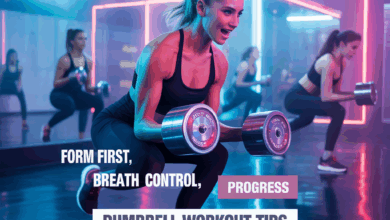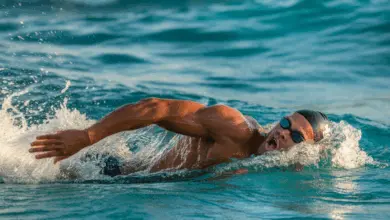Triathlon vs Ironman Difference: Which Endurance Challenge Is Right for You?

Have you ever stood at a race expo, stared at a swim cap and a bike helmet, and asked yourself: “Can I go from a sprint triathlon to an Ironman?” That moment—half inspiration, half intimidation—is where many athletes decide what kind of endurance test they want to take on. Understanding the triathlon vs Ironman difference helps you pick a goal that fits your lifestyle, time, and training appetite.
Triathlon vs Ironman Difference: What You Need to Know
At a glance, an Ironman is a type of triathlon, but not all triathlons are Ironmans. Triathlon is the umbrella term for swim-bike-run races that come in many distances (sprint, Olympic, half, and full). An Ironman typically refers to the full-distance Ironman triathlon: a 2.4-mile swim, 112-mile bike, and 26.2-mile run. The difference lies in distance, time commitment, training volume, and race strategy.
Understanding the Basics
Common triathlon formats
- Sprint triathlon: ~750m swim, 20km bike, 5km run — great for beginners.
- Olympic (Standard): 1.5km swim, 40km bike, 10km run — popular for competitive age-groupers.
- Half Ironman (70.3): 1.2mi swim, 56mi bike, 13.1mi run — major endurance step.
- Full Ironman: 2.4mi swim, 112mi bike, 26.2mi run — ultimate long-distance test.
How they feel on race day
Shorter triathlons feel intense and fast; you can race hard and recover relatively quickly. An Ironman is more about steady pacing, mental toughness, and efficient fueling—expect many hours on course and multiple strategies to manage fatigue.
Training Differences: Time, Volume, and Intensity
Training for a sprint or Olympic triathlon can be integrated into a busy life with focused sessions 6–10 hours per week. Ironman training often requires 10–20+ hours weekly, structured periodization, and consistent long rides and runs.
Key training elements for Ironman vs shorter triathlons
- Volume: Ironman demands longer aerobic base workouts (3–6 hour rides, 2–3 hour runs).
- Brick workouts: Short triathlon athletes do short bricks (e.g., 30–45 min bike + 15 min run); Ironman athletes practice longer bricks (2–4 hour bike + 30–60 min run).
- Intensity: Short races emphasize threshold and VO2 max efforts; Ironman focuses on tempo and steady-state endurance with occasional race-pace intervals.
- Strength & mobility: All athletes need strength work; Ironman training should include injury-prevention sessions to withstand higher volume.
Race-Day Strategy and Pacing
Shorter triathlons reward aggressive pacing and tactical surges. In contrast, Ironman success depends on discipline: conservative swim, efficient aero pacing on the bike, and run preservation. A common mistake is starting too hard on the bike and paying for it on the marathon.
Example race strategies
- Sprint: Swim hard enough to exit with a position you can maintain, push on the bike, and sprint the run.
- Ironman: Swim conservatively, maintain a sustainable power (or perceived effort) on the bike, and use run as damage control—walk aid stations if needed, power-hike hills strategically.
Nutrition, Recovery, and Lifestyle
Fueling needs differ massively. Short triathlons mostly require pre-race carbs and perhaps a gel during the run. Ironman nutrition includes calories every 30–45 minutes for 8–17 hours depending on finish time. Hydration, electrolytes, and gut training are essential.
Practical nutrition tips
- Practice race nutrition on long training days to avoid gastrointestinal issues.
- Use a mix of simple carbs (gels, chews) and whole-food options on the bike during Ironman training.
- Include electrolytes and test caffeine timing if you plan to use it for late-race boosts.
Practical Tips and Sample Workouts
Whether you pick a sprint, Olympic, half or full Ironman, these workouts and lifestyle tips will help you progress safely and effectively.
Sample weekly plan (beginner sprint triathlon — ~6–8 hours)
- Monday: Rest or yoga/mobility
- Tuesday: Swim technique + intervals (45 min)
- Wednesday: Bike endurance (60–75 min)
- Thursday: Run intervals (40 min) + light strength
- Friday: Swim recovery (30–45 min)
- Saturday: Brick — 45 min bike + 20 min run
- Sunday: Long ride or active recovery
Sample weekly plan (Ironman build — 12–16+ hours)
- Monday: Recovery swim + mobility
- Tuesday: Bike intervals (2–3 hrs) + short run (20–30 min)
- Wednesday: Long swim (60–75 min) + strength
- Thursday: Tempo run (60–90 min)
- Friday: Easy ride or rest
- Saturday: Long ride (3–6 hrs) + short brick run
- Sunday: Long run (60–120 min) or recovery
Real-World Examples That Resonate
Think of Sarah, a marathoner who added swimming and cycling to break plateaus—she completed a half Ironman within a year by gradually increasing bike volume and practicing brick sessions. Or Mark, a weekend warrior who targeted a sprint triathlon to ignite his fitness routine and found it more fun and motivating than solo runs.
Frequently Asked Questions
1. Is an Ironman just a longer triathlon?
Yes. A full Ironman is technically a triathlon (swim, bike, run) but the distances, time commitment, and required preparation make it a distinct discipline within the triathlon world.
2. How long does it take to train for an Ironman?
It depends on your starting fitness. Most athletes need 6–12 months of structured training if they can already run and bike comfortably. Beginners may take longer—progressive build, consistent recovery, and smart periodization matter more than rushing mileage.
3. Can I train for triathlons while working full-time?
Absolutely. Choose shorter race formats (sprint or Olympic) to fit into busy schedules, use high-quality focused sessions, and prioritize recovery. If you want an Ironman, expect to rearrange some commitments or lengthen your training timeline.
Conclusion — Make Your Choice and Get Started
Understanding the triathlon vs Ironman difference helps you align your goals with realistic training, nutrition, and lifestyle choices. Whether you aim for a sprint to jumpstart your fitness or a full Ironman for the ultimate challenge, plan smartly, practice race-day fueling, and build gradually. Ready to pick a plan? Check out tailored workout routines, dive into our nutrition guides, and explore recovery tips in our wellness tips section to get started.
Call to action: Choose your event, set a realistic timeline, and commit to a 12-week training block—share your goal in the comments or subscribe for a beginner-friendly plan delivered to your inbox.





